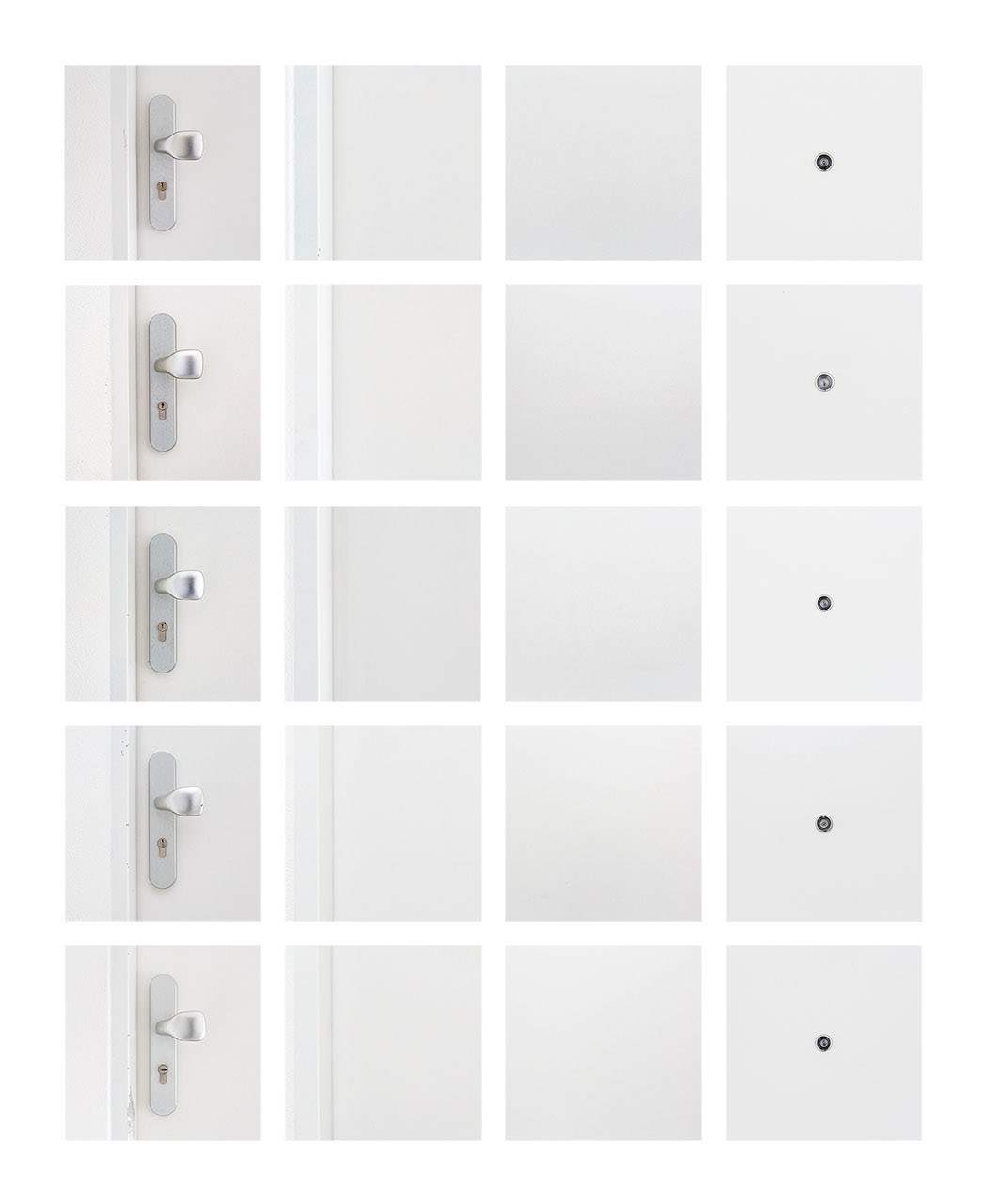I spent more than ten years photographing the life of objects in an ordinary functionalist house built in Bratislava by the Jewish architect Alexander Skutecky, conceptually mapping the historical and contemporary layers of architecture and interior design. From the boiler room to the lightning rod and in ten apartments, I searched for original elements that have survived since the house was built in 1936. I observed how they have been altered, preserved or replaced under the impact of daily use. I put the same details from different apartments underneath each other according to the floors of the building and in pairs I explored the equipment of the one-room apartment and the two-room apartment: through entrance door, bathroom, kitchen, rooms, toilet, pantry, etc.
I followed in detail how the great historical events of the 20th and 21st centuries, typical for the countries of Central Europe, have passed through the house. Arization, World War II, nationalization or restitution have had an impact on seemingly insignificant details that we are accustomed to interacting with every day. These ordinary objects shape our approach to things and influence our aesthetic tastes. The last two mosaics are a brief egilogue. It hints at how the house has been recently renovated and all the original features removed.
I respect the intimacy of the private, but from the shape of the objects and the hint of the surrounding space, we feel the individuality of people who lived in it. I combine a strict objective photographic approach, devoid of emotions (similar to the mathematical rules of architecture) with the personal (similar to the subtle reshaping of space by the inhabitants). I lived in one of the apartments for years, several generations of my family grew up in it. In short statements, I acknowledge the circumstances and limits of photographing (they didn't let me in, there was no time...) and the reality that shapes the appearance of objects, people's lives, the image of the times and the result of artistic work.


výťah



















